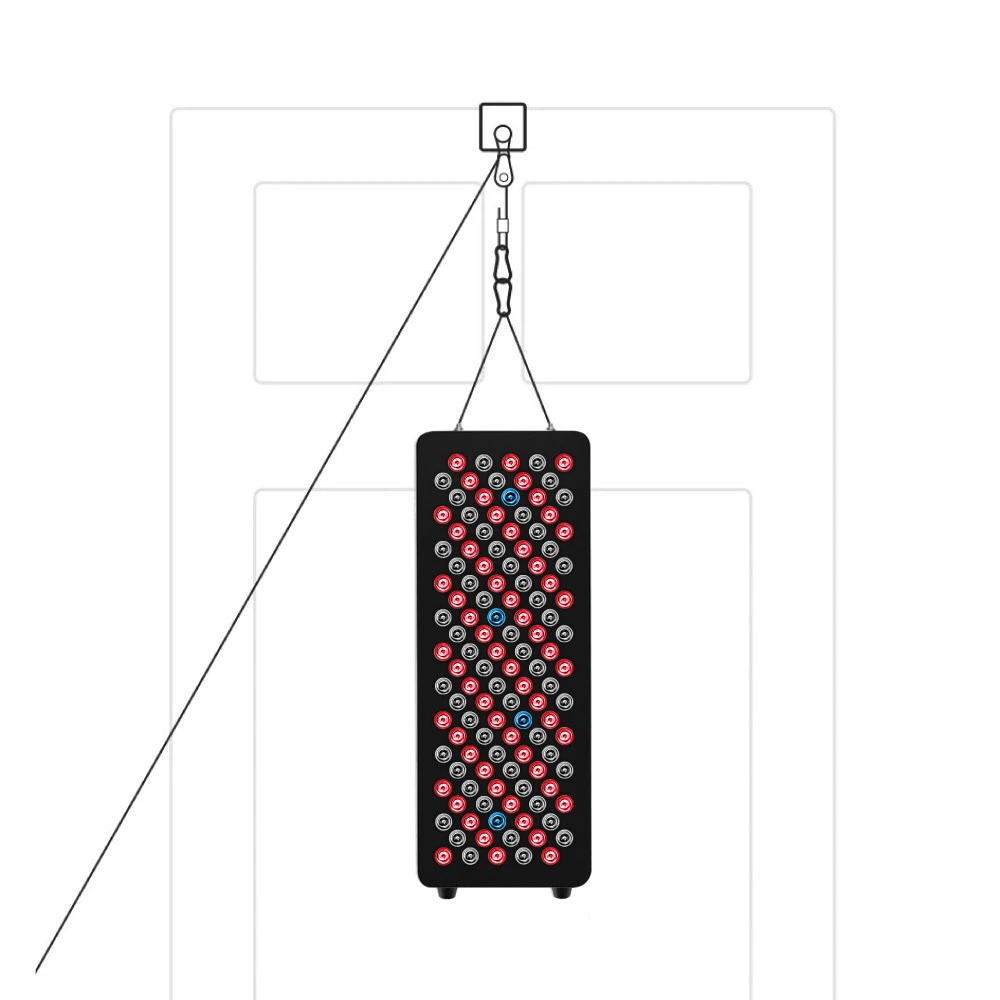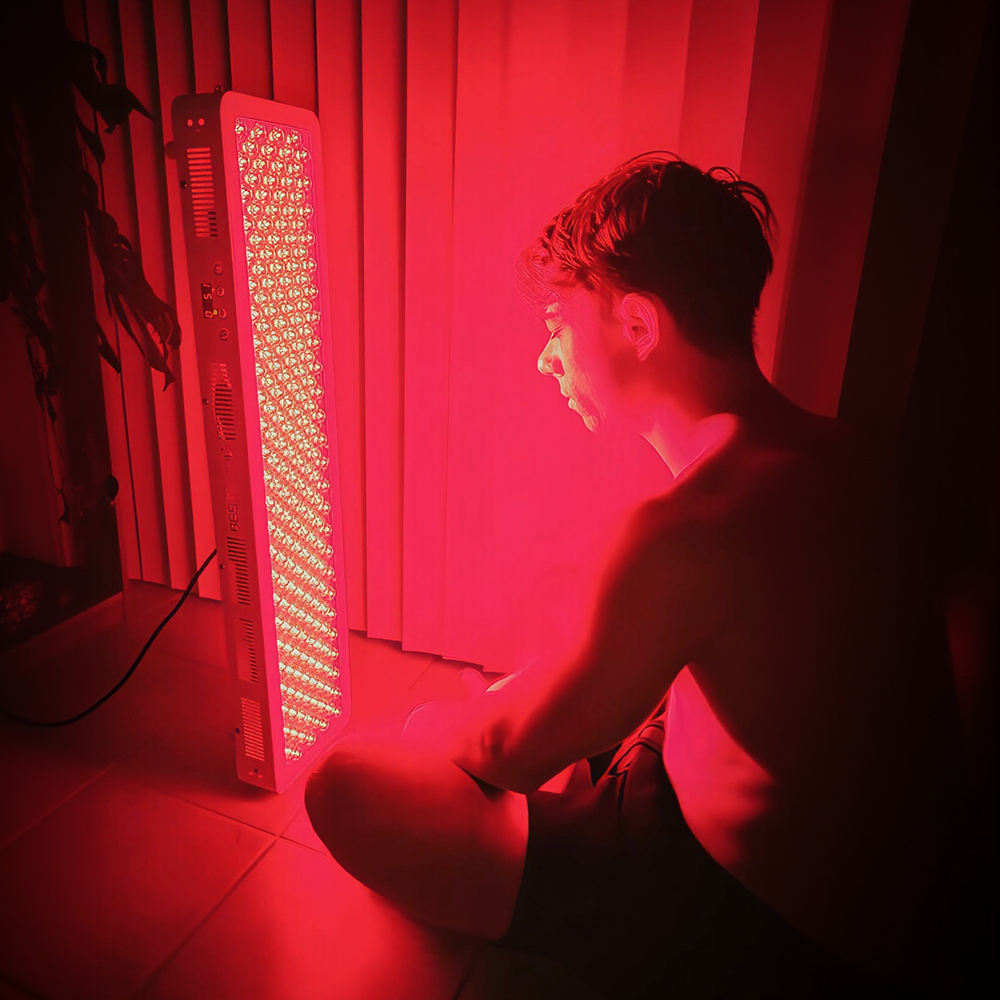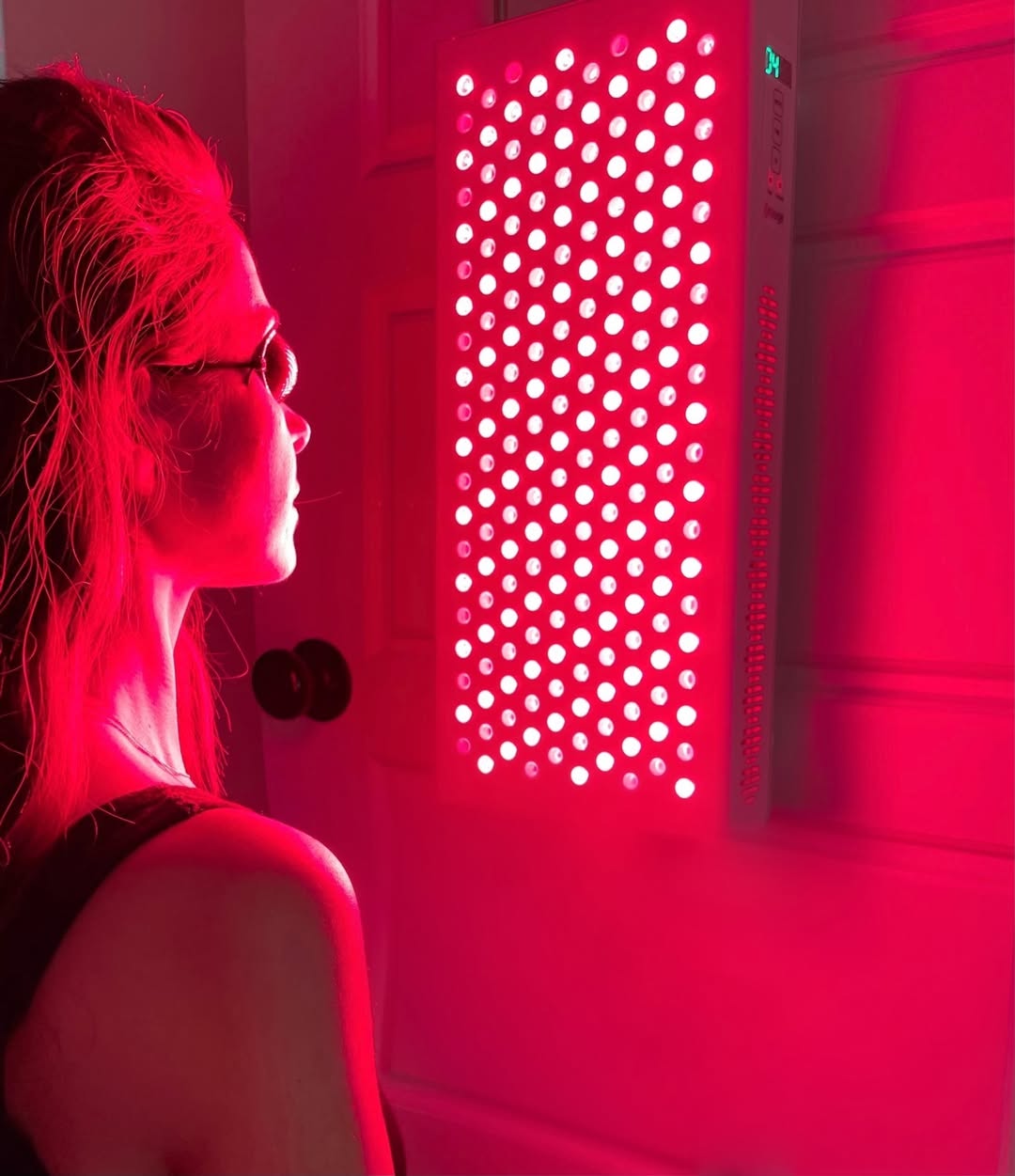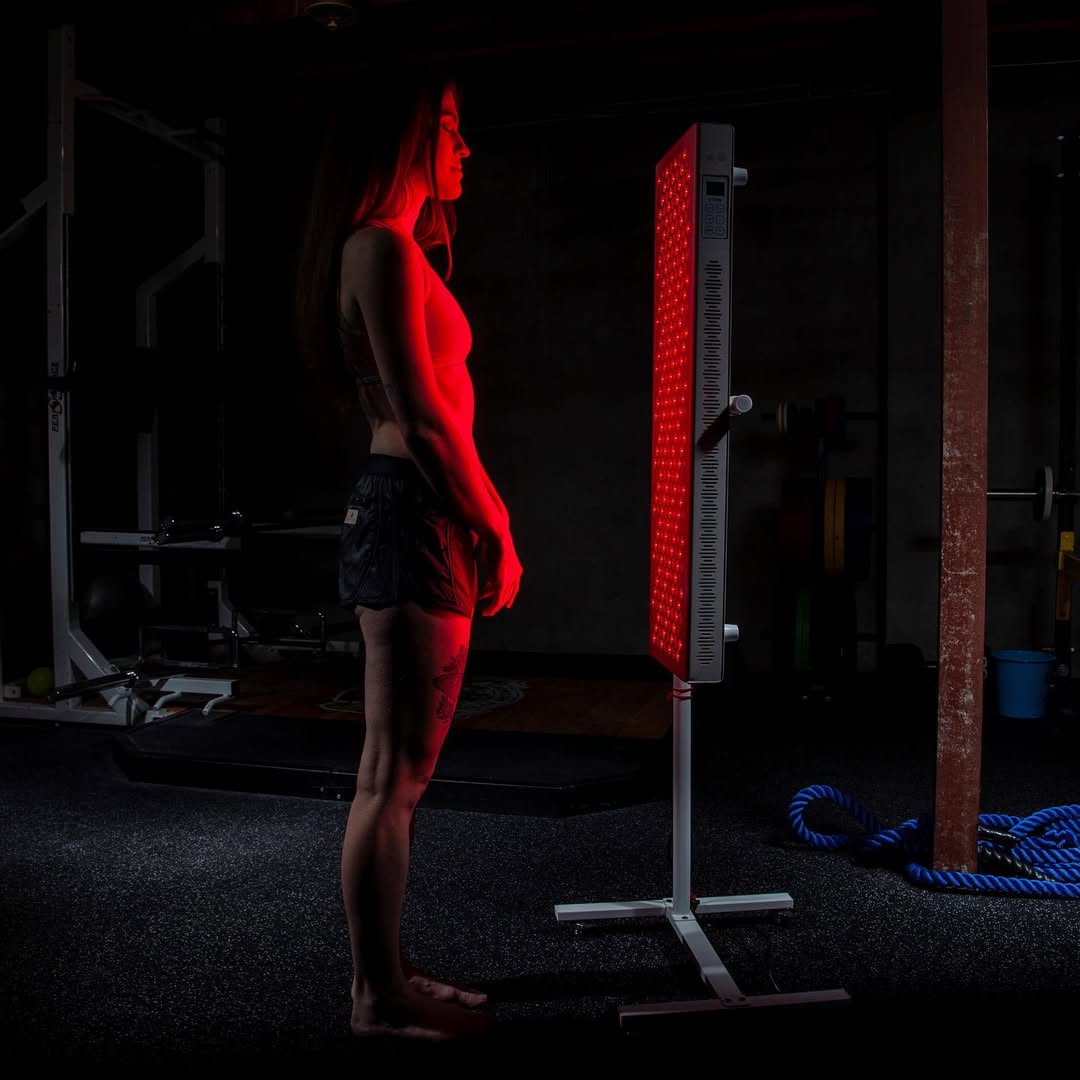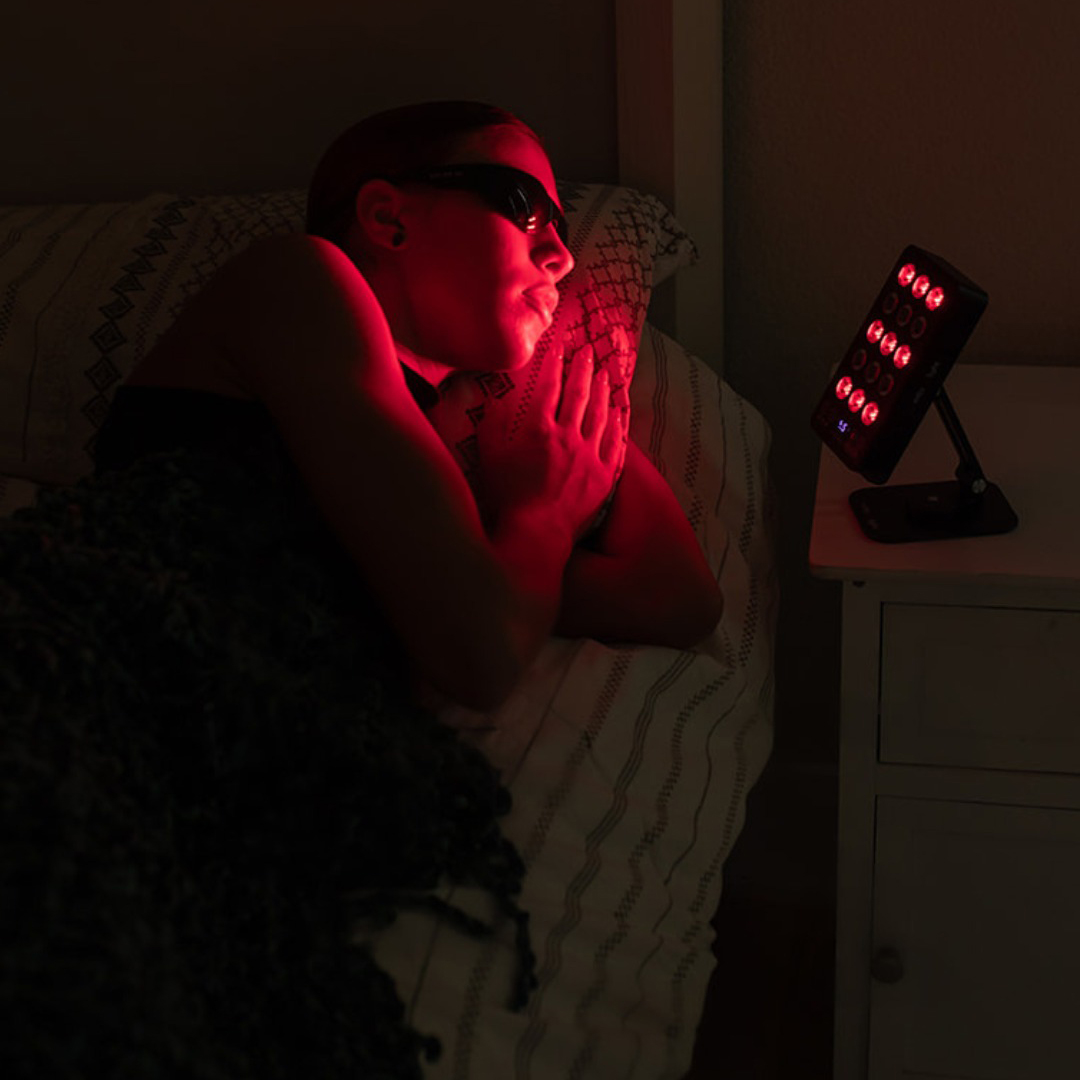![]() Free Shipping
Free Shipping ![]() Buy Now, Pay Later
Buy Now, Pay Later ![]() Eligible
Eligible
Red Light Therapy for Sciatica: A Science-Backed Guide to Pain Relief
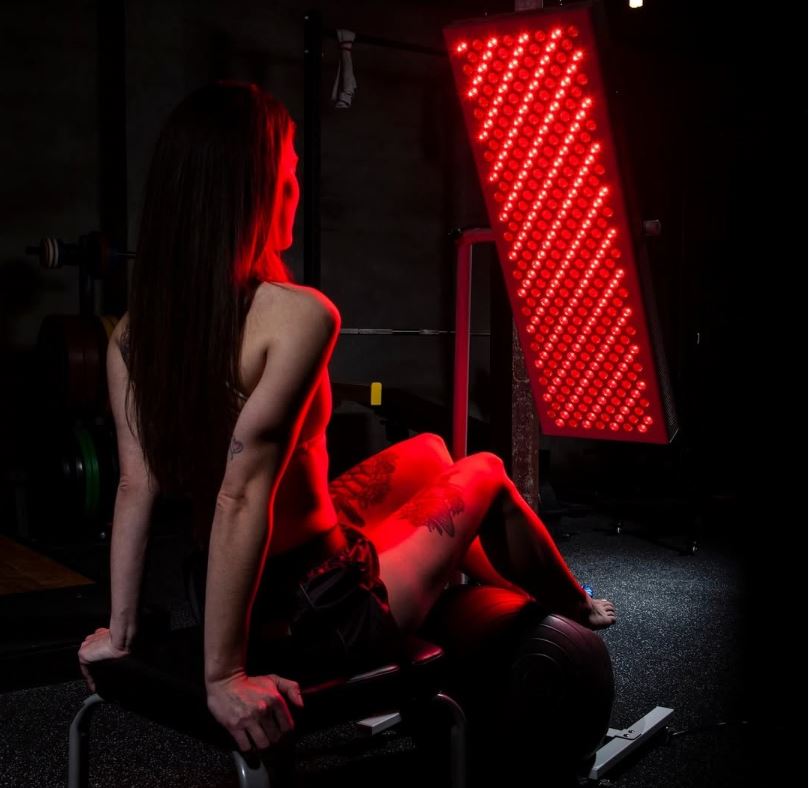
Sciatica pain—that sharp, shooting, or burning sensation radiating from your lower back down your leg—can be debilitating. While traditional treatments like physical therapy and medication are mainstays, a growing number of people are turning to a non-invasive, drug-free alternative: Red Light Therapy (RLT).
This article delves into the science behind red light therapy for sciatica, exploring how it works, the evidence supporting its use, and how you can incorporate it into your pain management plan.
What is Red Light Therapy? Understanding the Mechanism
Red Light Therapy, also known as Low-Level Laser Therapy (LLLT) or photobiomodulation, is a therapeutic technique that uses specific wavelengths of red and near-infrared (NIR) light. Unlike harsh surgical lasers that cut or burn tissue, RLT uses low-power light to stimulate healing at a cellular level.
The key principle is photobiomodulation. When red and NIR light photons penetrate the skin and reach the mitochondria (the “powerhouses” of our cells), they stimulate a complex biochemical reaction. This leads to an increase in adenosine triphosphate (ATP)—the primary fuel for cellular processes. Essentially, RLT gives your cells more energy to function, repair, and heal themselves.
The Direct Benefits for Sciatica and Nerve Pain
For sciatica sufferers, this cellular boost translates into several specific, therapeutic benefits:
- Reduced Inflammation: Sciatica is often caused by inflammation around the sciatic nerve, frequently due to a herniated disc or spinal stenosis. RLT has been shown to significantly reduce levels of pro-inflammatory cytokines.
- Accelerated Tissue Repair: By enhancing cellular energy, RLT helps repair damaged nerve tissue and the surrounding muscles and ligaments.
- Increased Blood Circulation: The therapy stimulates the formation of new capillaries, improving blood flow to the affected area, which delivers more oxygen and nutrients while removing waste products.
- Pain Relief: RLT can help modulate pain signals and trigger the release of endorphins, the body’s natural painkillers.
What Does the Research Say? Examining the Evidence
The body of evidence for red light therapy in managing musculoskeletal and neuropathic pain is promising and continues to grow.
A 2020 systematic review published in the Annals of Physical and Rehabilitation Medicine concluded that LLLT is an effective treatment for reducing pain and disability in patients with chronic low back pain, a common companion to sciatica.
Furthermore, a study focusing on lumbar disc herniation (a primary cause of sciatica) found that patients receiving LLLT alongside conventional exercise therapy experienced significantly greater reductions in pain and functional improvements compared to the exercise-only group.
A Doctor’s Perspective on RLT
While more large-scale studies are always welcome, many medical professionals are recognizing its potential as an adjunct therapy.
Dr. Michael A. Smith, M.D., a specialist in integrative medicine, states, “Red light therapy represents a compelling, non-pharmacological tool in our arsenal against nerve pain. Its ability to reduce inflammation and promote healing at a foundational level makes it a valuable option for patients looking to avoid or reduce their reliance on medications. It’s not a magic bullet, but when used consistently and correctly, it can provide significant relief.”
Red Light Therapy vs. Other Sciatica Treatments
How does RLT stack up against other common sciatica treatments? The following table highlights its position as a safe, non-invasive complementary approach.
Comparative Treatment Table for Sciatica
| Treatment Method | How It Works | Pros | Cons |
|---|---|---|---|
| Red Light Therapy | Stimulates cellular repair & reduces inflammation | Non-invasive, drug-free, minimal side effects, can be used at home | Requires consistency, not always covered by insurance |
| Physical Therapy | Strengthens core, improves flexibility, corrects posture | Addresses root causes, improves long-term function | Can be time-consuming, may cause initial discomfort |
| Oral Medications | (NSAIDs, Steroids) Reduce inflammation and pain | Fast-acting for acute pain | Potential for gastrointestinal, renal, or other side effects |
| Epidural Injections | Delivers steroids directly to nerve root | Targeted, potent anti-inflammatory effect | Invasive, temporary relief, risk of infection |
| Surgery | (e.g., Microdiscectomy) Physically removes disc material pressing on nerve | Can provide immediate and permanent relief for structural issues | Highest risk profile, long recovery time, invasive |
How to Use Red Light Therapy for Sciatica: A Practical Guide
Professional vs. At-Home Devices
You can access RLT through two primary channels:
- Clinical Settings: Chiropractors, physical therapists, and wellness clinics often offer high-powered RLT sessions. This is a great way to start under professional guidance.
- At-Home Devices: The market for high-quality, FDA-cleared home devices has exploded. These include:
- Panels: Ideal for treating large areas like the lower back.
- Wraps: Perfect for targeting the thigh or calf where sciatic pain radiates.
- Handheld Devices: Good for smaller, more specific areas.
A Sample Treatment Protocol
While you should always follow the manufacturer’s instructions or your doctor’s advice, a general protocol for sciatica might look like this:
- Treatment Area: Apply the light directly to your lower back (over the affected nerve root) and along the path of the pain down your leg.
- Distance: Hold the device or position yourself 6-12 inches from the skin.
- Duration: Treat each major area for 5-15 minutes.
- Frequency: 3-5 times per week for chronic pain; daily for acute flare-ups.
- Consistency is Key: Results are cumulative. You may feel some relief after the first session, but sustained improvement typically occurs over several weeks.
VELLGUS Elite V2
THE #1 RATED RED LIGHT DEVICE
VELLGUS pro V2
THE #1 RATED FULL BODY RED LIGHT DEVICE
Safety and Side Effects: What You Need to Know
Red light therapy is considered exceptionally safe for most people. It is non-toxic, non-invasive, and does not use UV radiation, which can damage the skin.
The most common side effect is minimal and temporary. Some users may experience slight redness or tenderness in the treated area, which usually resolves quickly. It is always recommended to wear protective goggles during treatment to shield your eyes from the bright light.
Conclusion: Is Red Light Therapy Right for Your Sciatica?
Red light therapy offers a scientifically-backed, safe, and non-invasive approach to managing the inflammation and pain associated with sciatica. While it may not replace all other treatments, it serves as a powerful complementary tool that addresses the root cause of the pain at a cellular level.
If you are struggling with sciatica and seeking a drug-free path to relief, discussing red light therapy with your healthcare provider is a worthwhile step. By combining this modern technology with a comprehensive care plan, you can take proactive control of your nerve pain and work towards a more comfortable, active life.



